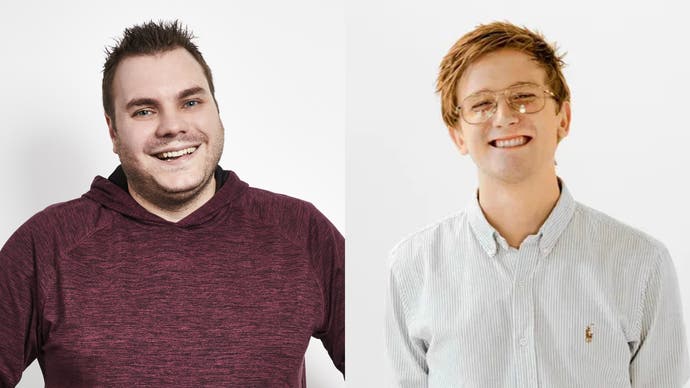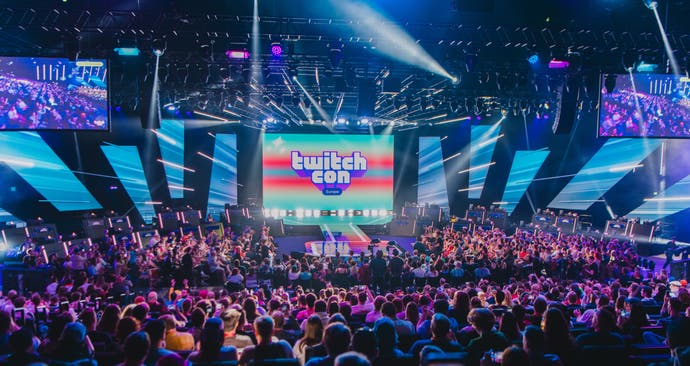The future of Twitch: safety, growth, and the importance of finding community
"I think there's a lot of positivity around Twitch right now."
The biggest headlines for Twitch this year have been focused on the past. Last month, high-profile streamer Guy "Dr Disrespect" Beahm admitted he was permanently banned from Twitch in 2020 after exchanging "messages with an individual minor back in 2017". Following reports, a former Twitch employee stated Beahm continued to send sexually explicit messages even after the minor's age was known. His admission was somewhat prompted by his removal from his own development studio.
It's a shocking story and one Twitch seems keen to distance itself from. When I asked specifically for comment on the Dr. Disrespect story, I received a flat "no comment". That's not surprising: Twitch never comments on specific streamer cases and is instead focused on its platform.
However, Twitch did follow up to emphasise the importance of safety on the platform. "Harassment has no place on Twitch, and we take enforcement of our harassment and hateful conduct policies seriously," a spokesperson told me, before detailing a number of features used to promote safety including Automod, Shield Mode, and follower verification. "These tools, in addition to our ongoing, 24/7 content moderation, help prevent harassment on Twitch. We continue to build on this work."
At the subsequent TwitchCon Europe 2024 event held in Rotterdam, the mood was decidedly more positive, with Twitch understandably keen to instead look ahead at Twitch's future.
But what exactly is Twitch's future? In January, in the wake of layoffs, CEO Dan Clancy acknowledged that Twitch wasn't profitable, leading to concern among some streamers about the longevity of the Amazon-owned streaming platform.
I spoke to both VP of product Jeremy Forrester and VP of global partnerships Pontus Eskilsson at TwitchCon, who reassured me that Twitch isn't going anywhere. For both execs, the key word was sustainability.
"We definitely are intending to be around for many years," said Forrester. "Obviously the biggest action that we took was the layoffs... to try and put Twitch in a position to be sustainable for the long run. We want to be in a position where we can continue supporting creators for the longest time."
"We're constantly evolving," said Eskilsson. "We had a difficult start of the year, but since then we've kept iterating, we've launched more things that have helped more streamers grow and make more money.
"We keep putting up things that we believe are going to be net good for the community and we're doing so in a sustainable way. That's really the key here: making sure that sustainability for us in the long run is top of mind and the intent for us is to be here 40 years from now."
While neither VP works directly in the safety team, it's still an important facet of their jobs - considering both streamers and viewers.
"[Safety] usually comes into the process very near the start, so when we're building new products we work very closely with our safety team," explained Forrester. He mentions products like Stream Together and its new drop-in feature revealed at the convention's opening ceremony, where streamers are given control over specific mechanisms to ensure their safety. The recent Discovery filters around content classification labels are also a way for viewers to safely control content.
"It's a very tight collaboration between the two teams," added Forrester, "because we don't want to learn something that then ends up being used as a form of abuse. That's the worst feeling."
Said Eskilsson: "Streamer safety is top of mind for me. It's important for us that we run an inclusive website... Everybody's wellbeing on Twitch is definitely a key area for us and we've invested a lot in safety features to give to moderators and to streamers. That's something we're going to keep doing for the foreseeable future, because it's an ever-evolving work stream."

During the opening ceremony, Clancy revealed the platform's new mission statement: "Create belonging by enabling streamers to build community". This is how Twitch will operate and a major element of that is listening to feedback from streamers to improve the relationship between platform and users.
That relationship has sometimes been called into question. For instance, at the start of the year Twitch frequently amended its community guidelines on sexual content as streamers pushed the boundaries of what is acceptable. Moments like this suggest a certain antagonism between Twitch and its streamers, although Twitch's changes at least show it is listening and responding to feedback more transparently than before.
"TwitchCon is a great example of us trying to get out there and spend time with streamers, really understand their feedback, really understand what their pain points are and making sure that we're listening first and foremost," said Forrester. Clancy, in particular, is described as a very hands-on CEO who has met hundreds of streamers to understand their needs over recent months, and aims for more transparent communication via the regular Patch Notes streams.
"How do we more deeply engage with the community, so that we feel like we're building together?" said Forrester. "I've seen the sentiment change a lot over the last couple of years and I think there's a lot of positivity around Twitch right now. I do think it's been paying off."
"I've seen the sentiment change a lot over the last couple of years and I think there's a lot of positivity around Twitch right now. I do think it's been paying off."
Eskilsson also noted the roundtables and different forums at TwitchCon and online in which the platform is gathering feedback. "We need to keep iterating and need to keep adjusting and keep adapting to the overarching streaming community and the needs of the streaming community," he said. "Our intent is to keep building things with the community. It's not something we want to do in a silo. And being transparent as part of conversations is key there."
Perhaps one way for Twitch to grow and maintain sustainability is through non-gaming content. Gaming streams are most prominent on the platform, but Just Chatting is continually the most-used tag. Moreover, IRL streams, music streams, and art streams are growing in popularity and that's one reason for Twitch's forthcoming revised mobile app, as well as its new DJ Programme in partnership with major labels to allow DJs to stream popular music. DJs and IRL streamers are also the first of Twitch's new Creator Clubs to help streamers find communities of like-minded people.
Forrester agreed non-gaming content is an area of growth, but said there's still a lot of growth opportunity in gaming too. "Over the years that I've been at Twitch - eight years now - we've gone back and forth being like 'are there more gamers out there?' and then the pandemic hit and we were like 'yeah there are tonnes more gamers'," said Forrester. "So we definitely think there's still a lot of opportunity in growing gaming as a vertical."
The reason for products focused on non-gaming content is that it's more difficult for these streamers to find one another and create community. "If you stream Final Fantasy online, you know who some of the other streamers are, you've probably met them, they probably know who you are," said Forrester. "And it's much easier to congregate around that, where it's a little bit harder for streamers who are in non-gaming."
He continued: "Gaming creators have a thing to do, that's at the heart of it. As a streamer, you're always looking for something to do to entertain the audience, to really engage with them, and gaming creators have games. Games also create a natural rhythm because there's always either new games coming out, or if you play a single game they now have built-in seasons and mechanics to keep that game engaging. There's always a rhythm to keep your content fresh. For non-gaming creators, we believe collaboration is a really big arc to help them continue to grow."

It all comes back to that mission statement, enabling streamers to grow and be part of a community. But how is Twitch helping smaller streamers develop? After all, popular streamers like Kai Cenat make headlines for record-breaking streams and stunts, but what about those at the other end of the spectrum?
Both Forrester and Eskilsson state consistency is the biggest driver for growth. "Kai has put in a significant amount of hours to get where he is," said Eskilsson. "When I speak to streamers here or at other events, it is really that consistency that I've seen has been key."
Forrester also advised consistency with regular stream schedules to give viewers a heads up on when streamers are live. He also noted how streamers are getting more creative to engage the community and ensure streams are unique. As for Twitch, the Discovery Feed and new mobile app will aid with discoverability for smaller streamers.
"Twitch's discovery has historically always been: we give you a suite of options and the viewer chooses which one they want to watch," he said. "That makes it really hard for us to actually direct traffic. That's one of the reasons why when you're small it's like 'I don't feel like I get viewers', it's because we give viewers a whole lot of different options and they choose the things they want to watch.
"With products like the feed, we are going to have more control to hopefully grow smaller creators. And if we find someone who's getting success, how do we make them grow faster? Historically, it's been hard for us to do that."
"We're structured in a way in which we have a good line of sight for the next few years of where we want to go and where we want to be."
It's clear, then, there's still room for Twitch to grow and for its new features to expedite that growth by - as that mission statement suggests - enabling streamers to find and grow community. The platform has weathered plenty of storms, this year's negative headlines being no exception, but by listening to streamers, Twitch is seeking to maintain its position as the number one streaming platform.
"I personally feel very confident about where we are right now," surmised Forrester. "We're structured in a way in which we have a good line of sight for the next few years of where we want to go and where we want to be."
"There's something really great about the platform... it's rare that you find a business that is so tightly aligned between monetisation and growth, which is for us: if we can get a viewer into the right streamer's community, that's what keeps them around.
"It's rare that you find a business where all of the parts are really tightly coupled. And we're all focused in the same direction."
Twitch and its streamers seem more aligned than ever, then, as the platform seeks to overcome its past, and hopes for a brighter future.

